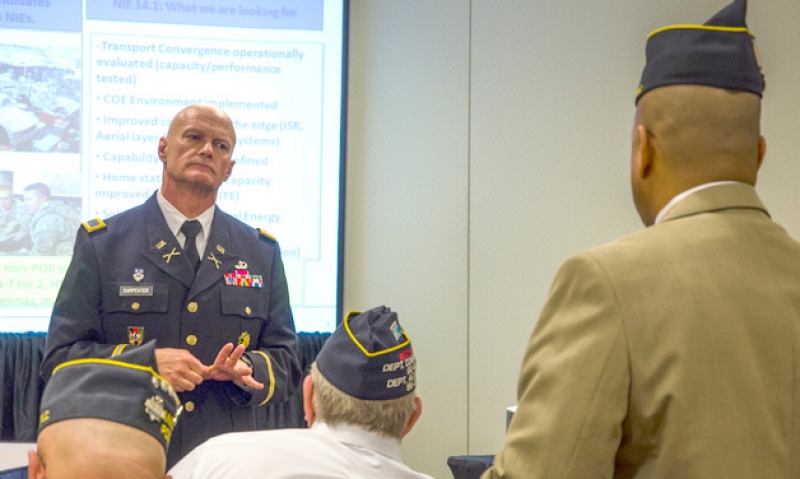
Developing a battery of options
Napoleon famously said that "an army marches on its stomach." Today, the U.S. Army also runs on batteries. That was made clear in a talk to members of The American Legion’s National Security Commission on Feb. 27. The speaker was Army Col. Robert Carpenter , director of the System of Systems Integration (SoSI) Directorate at the Pentagon.
The Army describes SoSI as utilizing "the Family of Systems approach to ensure integration and interoperability between Army Programs of Record (PORs), current force systems, urgent need systems ... to achieve integrated capabilities for a full spectrum force ... " In non-Pentagon speak, Carpenter’s command makes sure that the Army’s tools, systems and people all work and, equally importantly, work together. Part of that assurance of interoperability – that is, building a functioning network – lies in real-time,real live testing of new high-tech, electronic communications devices by soldiers.
This integrated "networking the soldier" system of laptop, tablet, cellphone, handheld radio-derived tools linked by satellites is increasingly vital in a modern, smaller Army whose personnel may be spread out over distances ranging from just out-of-sight to continents away. All must be able to communicate effectively and without fail with one another and with their command bases. The testing of the communications network components and the system as a whole is done through a two-year-old program called Network Integration Evaluation (NIE).
After a briefing to Legionnaires, Carpenter explained it in a nutshell: "I’m in charge of the NIE, and what it does is take emerging technology in communications to enhance our network as a key component of our Army modernization. We take it out to White Sands twice a year and develop it – then take the best and deploy it to our troops in the field. With NIE we have the chance to exercise things to know (that) once we put it in the hands of soldiers in the field, it’s going to work.
"It’s important to understand that the NIE process is about more than just fielding stuff. Because we’re working in the largest range space that the Army owns – 40 miles wide and 100 miles deep – it gives us an opportunity to put that full brigade out there and work all their assets. So, it’s really not just how we’re testing the hardware and software that comprises the communications network, it’s also how the Army is developing the doctrine and how we are going to field, train and sustain and continually improve these components. In the end, we’re really determining how the Army going to utilize and fight with this network."
During a question-and-answer period at the conclusion of his briefing, Carpenter was asked if there were concerns about the reliability of battery-powered field communications equipment.
"We certainly take that into consideration, so with the ‘stuff in the box’ (Carpenter’s term for the network system) we have battery chargers," he said. "We also get our batteries from the commercial manufacturers, since it’s their business to make the best."
